Commemorated: February 23/March 8
Dmitry Lapa
The name of St. Milburgh (also Milburga) means “gentle protection.” She was born in the mid-seventh century and reposed in 715 (according to another version in 722). From time immemorial Milburgh has been one of the most popular and venerated female saints of the county of Shropshire in the west of England, along with St. Winefride. Her mother was a saintly Kentish princess named Ermenburgh (also known as Domneva) and her father was the Mercian ruler named Merewald (also spelt Merewalh). He was probably a son of Penda, the ferocious pagan king of Mercia in central England.
Merewald ruled the western Mercian sub-kingdom of Magonsaete which more or less corresponds to the present-day counties of Herefordshire and Shropshire. St. Ermenburgh and Merewald had four children: a son who died very young and three daughters all of whom became saints: Milburgh, Mildred and Mildgyth. Under the influence of his holy spouse Ermenburgh, Merewald was converted to Orthodoxy and became a pious king, establishing a number of monasteries in his sub-kingdom, including Leominster in Herefordshire and Much Wenlock in Shropshire—St. Milburgh later became its patroness. Milburgh was the eldest of the three holy sisters.
Unfortunately, not many details of St. Milburgh’s life have survived; the best known version of her life was written in the late eleventh century by the Monk Goscelin. According to this life, Milburgh was tonsured by the holy Archbishop Theodore of Canterbury when she was very young. When she still was living at home in Magonsaete she refused all the riches of this world, cared for the poor and the sick and converted many to Christ. The late medieval tradition says that a certain wealthy man sought Milburgh’s hand but the holy woman had vowed to serve God as a virgin all her life. The nobleman in revenge pursued her with armed force. The saint crossed the river that turned into an unpassable flow and stopped the wicked men.
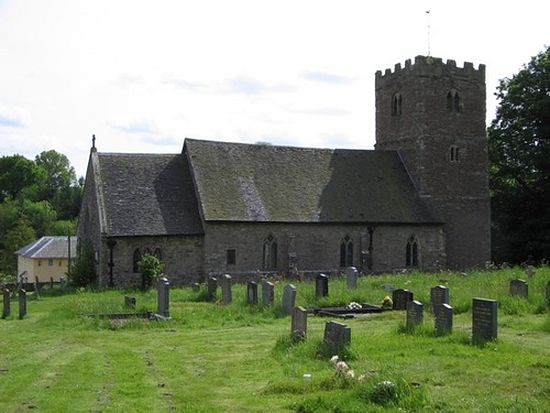 Church of St. Milburgh in Stoke St Milborough, Shropshire
Church of St. Milburgh in Stoke St Milborough, Shropshire
The site where Milburgh hid from the noble is named Stoke St. Milborough to this day. Through the saint’s fervent prayers a holy well gushed forth in that place which healed many sick people, especially those with eye diseases. This holy well, a destination for pilgrimages, still exists and there are reports of miraculous cures of sore eyes from its water even nowadays.
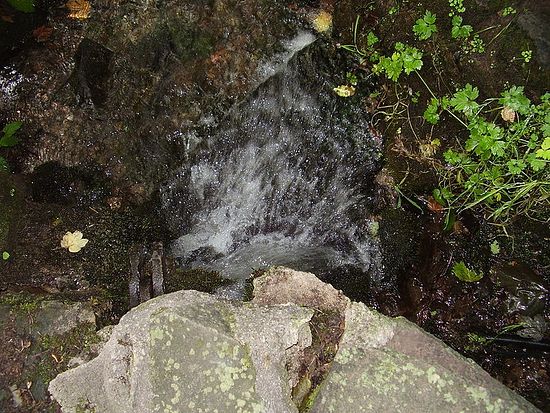 St. Milburgh's Holy Well in Stoke St Milborough, Shropshire
St. Milburgh's Holy Well in Stoke St Milborough, Shropshire
St. Milburgh’s father founded Much Wenlock (the original name—Wimnicas or Wininicas) monastery in about 670 and placed it under the direction of St. Botolph of Iken who was a great English missionary and abbot of that time. He became Milburgh’s spiritual mentor. The first abbess of the double Wenlock monastery was the French nun Liobsynde of Chelles and the second abbess was St. Milburgh who ruled the monastery for the rest of her life.
Unlike her younger sisters Mildred and Mildgyth (who became abbesses in Kent and Northumbria respectively), Milburgh never left her native kingdom and remained in Shropshire until her death and for the past 1300 years she has been closely associated with this county, its people and their life, being their chief patroness. It was recorded that during the abbacy of Milburgh life in Wenlock prospered as in Paradise. Everybody loved her for her meekness, humility, softness and simple holy life. The saint herself practiced manual labor, working in the monastery fields and gardens, grew many kinds of sweet fruit and numerous beautiful flowers.
Despite the strict discipline in her monastery the holy mother was always very hospitable, received many guests—among them were widows, the sick, the needy and suffering. The saint who loved country life and country folk herself frequently visited local villages helping their dwellers with compassion and giving consolation. She healed the sick by her prayers and also with herbs which she knew perfectly. It was said that she helped arrange evangelization and pastoral work in parts of Shropshire that at that time were still pagan, probably sending out priests from her own monastery.
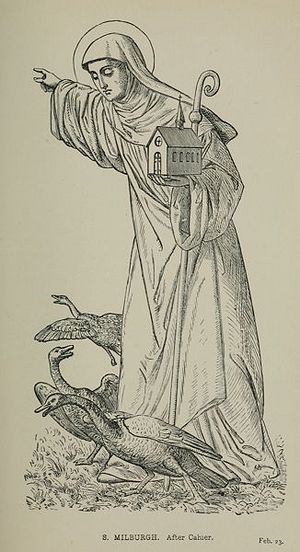 St. MilburghAlready in her lifetime Milburgh obtained the abundant grace of God, and owing to her spiritual gifts, she led many to repentance. The Lord bestowed the ability to work great miracles on His holy maiden: she healed incurable diseases, had the gifts of discernment and clairvoyance, and saw many events at a great distance. Once a woman with her newly-reposed little child came to the saint, all in tears, imploring the saint to pray for a miracle. Milburgh first declined but the mother’s faith was so strong that she said she would not leave her until the saint would do something. Milburgh then began to pray so fervently that the woman to her astonishment saw her raised up above the ground, surrounded by flames. Milburgh prayed thus for several minutes and the child by the mercy of God rose up alive and absolutely sound.
St. MilburghAlready in her lifetime Milburgh obtained the abundant grace of God, and owing to her spiritual gifts, she led many to repentance. The Lord bestowed the ability to work great miracles on His holy maiden: she healed incurable diseases, had the gifts of discernment and clairvoyance, and saw many events at a great distance. Once a woman with her newly-reposed little child came to the saint, all in tears, imploring the saint to pray for a miracle. Milburgh first declined but the mother’s faith was so strong that she said she would not leave her until the saint would do something. Milburgh then began to pray so fervently that the woman to her astonishment saw her raised up above the ground, surrounded by flames. Milburgh prayed thus for several minutes and the child by the mercy of God rose up alive and absolutely sound.
All the sources of St. Milburgh’s life bear witness to her close communication with the natural world. The people of Shropshire have for many centuries believed that Milburgh has special power over wild animals and birds; the rural people of Shropshire, gardeners and farmers, invoke her name for protection of their corn, fruit, crops and fields; and for many she is the patroness of wild and domestic birds. St. Milburgh also “instructed” wild geese, which at the time were plaguing local fields, and they obeyed her. Once, just before the harvest, a tremendous flock of birds alighted on neighboring fields and started pecking the corn. All the people panicked and could not frighten the creatures by any means. The holy woman began praying to God and at once the whole flock rose very high and flew away. To this day, it is said, geese around Much Wenlock do not eat from local fields and do not even alight on the ground on her feast-day in memory of their protectress!
St. Milburgh was very kind, attentive, friendly and caring to everyone: children and adults, men and animals. She was one of many “rural” English saints of the time who lived a quiet, humble, ascetic life, who were very, very close to the faithful and were already venerated by them during their lifetime. St. Milburgh reposed at Wenlock in her sixties after a long and cruel disease. Before her death she blessed all her nuns and bid farewell to them. The last words of Milburgh were: “Blessed are the pure in heart, blessed are the peacemakers.”
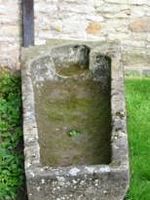 Coffin thought to be that of St. Milburgh inside Holy Trinity Church in Much Wenlock, ShropshireThe shrine with her relics was visited by multitudes of pilgrims seeking her help. The original Wenlock Abbey was most probably destroyed by Danes in c. 874, and the tomb with St. Milburgh’s relics was for a while lost. Earl Leofric of Mercia and his wife Lady Godiva in about 1040 founded a house of secular priests on the site of St. Milburgh’s monastery but it existed only till the Norman Conquest. According to Goscelin, Cluniac monks from La Charite sur Loire in France refounded Much Wenlock Monastery as Roman Catholic priory in 1079 at the request of Roger de Montgomery, Earl of Shrewsbury. The place of the grave of the holy abbess was unknown but a miracle soon occurred: on the advice of Archbishop Anselm of Canterbury monks started excavating a local old and unused church; at that time one day local boys playing nearby suddenly fell into a tomb. The exact site was examined and intact, the sweet-smelling relics of St. Milburgh were dug out, together with remains of her coffin and a church altar. The indescribable fragrance that followed resembled all the flowers that the saint used to tend in her garden.
Coffin thought to be that of St. Milburgh inside Holy Trinity Church in Much Wenlock, ShropshireThe shrine with her relics was visited by multitudes of pilgrims seeking her help. The original Wenlock Abbey was most probably destroyed by Danes in c. 874, and the tomb with St. Milburgh’s relics was for a while lost. Earl Leofric of Mercia and his wife Lady Godiva in about 1040 founded a house of secular priests on the site of St. Milburgh’s monastery but it existed only till the Norman Conquest. According to Goscelin, Cluniac monks from La Charite sur Loire in France refounded Much Wenlock Monastery as Roman Catholic priory in 1079 at the request of Roger de Montgomery, Earl of Shrewsbury. The place of the grave of the holy abbess was unknown but a miracle soon occurred: on the advice of Archbishop Anselm of Canterbury monks started excavating a local old and unused church; at that time one day local boys playing nearby suddenly fell into a tomb. The exact site was examined and intact, the sweet-smelling relics of St. Milburgh were dug out, together with remains of her coffin and a church altar. The indescribable fragrance that followed resembled all the flowers that the saint used to tend in her garden.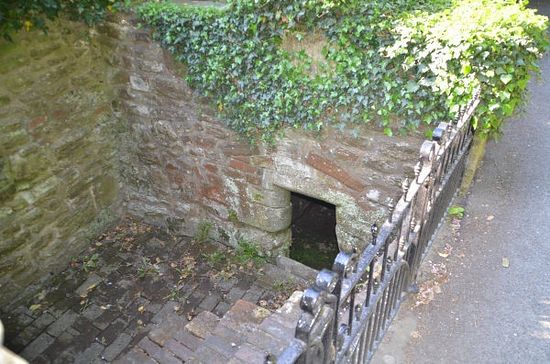 St. Milburgh's Holy Well in Much Wenlock, Shropshire
St. Milburgh's Holy Well in Much Wenlock, Shropshire
Countless miracles began to occur from the relics, many of them described in c. 1101 by Bishop Otto of Ostia: blindness, leprosy as well as a wasting disease caused by a parasitic worm were cured at her shrine. A drowned child was returned to life as well. Monks who fell from the scaffolding during the building of the new church were uninjured. In the late medieval period, St. Milburgh was among the most venerated woman saints of England. Her name was included in most early English calendars and no fewer than five ancient churches were dedicated to her.
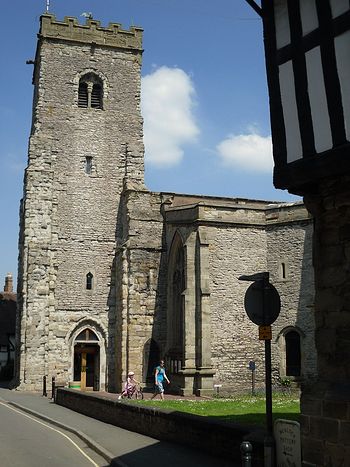 Holy Trinity Norman Church in Much Wenlock. Photo by Irina Lapa
Holy Trinity Norman Church in Much Wenlock. Photo by Irina Lapa
Believers from all corners of England and Wales flocked to her shrine. The Much Wenlock Priory of Archangel Michael and St. Milburgh that followed the Cluniac order (in fact what had become the reformed Benedictine order, which originated in c. 910 in eastern France) flourished till the Reformation. St. Milburgh, whose relics were kept in a silver reliquary, was the priory’s main patroness. Much Wenlock, situated not far from the Welsh border, was a great (though not the only) pilgrimage and monastic centre of Shropshire, along with other medieval monasteries of the county: Shrewsbury Abbey, Buildwas Abbey, Haughmond Abbey, Lilleshall Abbey and White Ladies Priory.
Extensive picturesque ruins survive of nearly all of them (while Shrewsbury Abbey is used as a parish church to this day) and are visited by Orthodox, Catholic and Anglican pilgrims; even the locations of all of them are very picturesque and inspiring as the county of Shropshire itself is one of the most rural and beautiful regions of England with many hills, forests, gardens and an unspoiled nature that has attracted prominent painters, composers and poets. The priory was so influential and strong that it established its own daughter communities, for example St. Helen’s Priory on the Isle of Wight as well as in Dudley and in Paisley, Scotland.
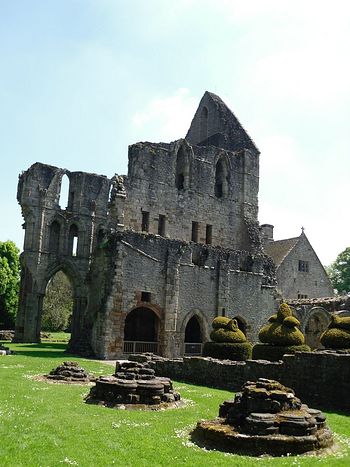 Much Wenlock Priory ruins. Photo by Irina Lapa
Much Wenlock Priory ruins. Photo by Irina Lapa 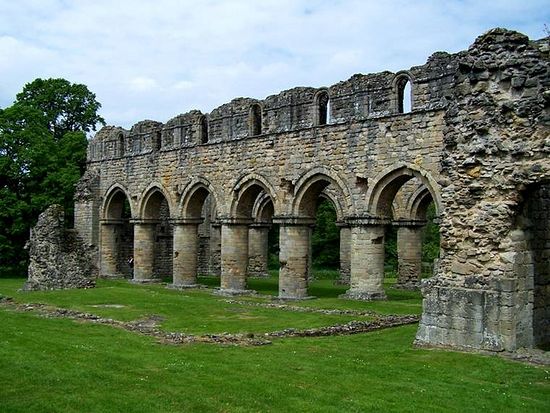 Much Wenlock Priory ruins, Shropshire
Much Wenlock Priory ruins, Shropshire
Wenlock Priory was dissolved under Henry VIII in about 1540: the enormous priory church was partly destroyed, the monastic buildings either demolished or converted for private residences (namely the infirmary and prior’s dwelling) and St. Milburgh’s relics presumably burned by bloodthirsty iconoclasts. Today a considerable part of this huge church (107 metres or 350 feet long—one of the longest in England), though roofless, still survives and attracts many visitors. The atmosphere of holiness and spirit of St. Milburgh are present here to this day. Visitors can see fine topiary in the priory gardens: hedges and bushes are cut in the shape of animals.
The small and pretty town of Much Wenlock is situated between the larger towns of Bridgnorth and Shrewsbury. The beauty and holiness of the site inspired the local Shropshire poet Alfred Housman and the great composer Ralph Vaughan Williams: the former composed several of his poems in the town and the latter set them to music. In addition to the priory ruins, Much Wenlock boasts the Norman parish church of the Holy Trinity, standing on the site of the original early English monastery1 (notably, an ancient chest inside this richly decorated church is thought by many to be the original coffin of St. Milburgh, though that is impossible to confirm) as well as the holy well dedicated to St. Milburgh, known for curing eye diseases. Every year this holy well is lavishly adorned, a custom throughout England called “well-dressing”.
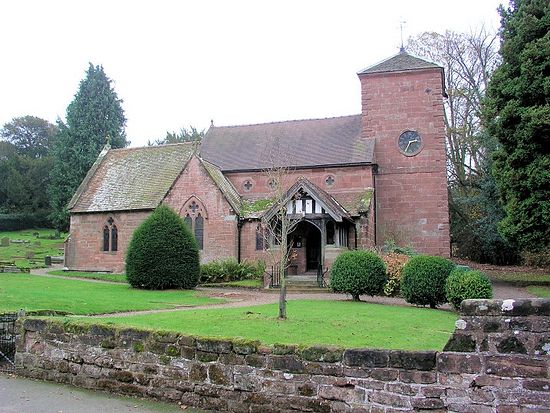 Church of St. Milburgh in Beckbury, Shropshire
Church of St. Milburgh in Beckbury, Shropshire 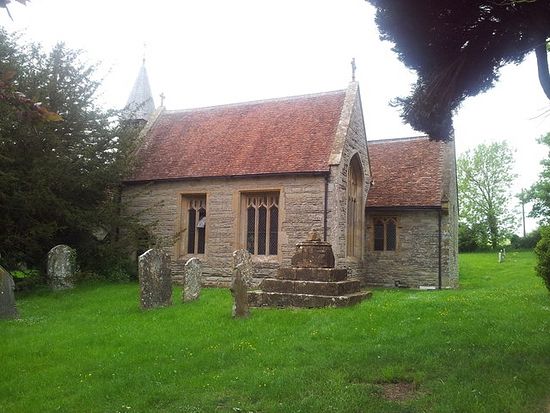 12th-century Church of St. Milburgh in Wixford, Warwickshire
12th-century Church of St. Milburgh in Wixford, Warwickshire
The village Stoke St. Milborough in the same county, mentioned above, has the famous holy well and the Anglican parish church—both are dedicated to St. Milburgh. Other church dedications to St. Milburgh can be found in the following places: Beckbury in Shropshire, Wixford in Warwickshire, Offenham in Worcestershire (another patroness of this church is the Mother of God).
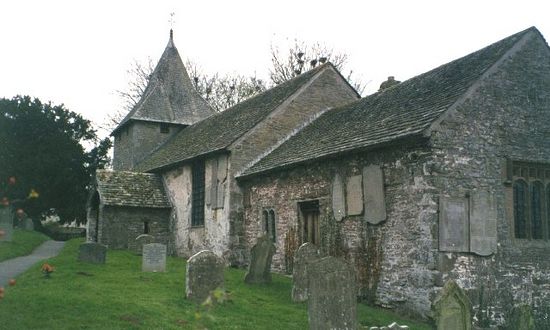 St. Billo's Church in Llanfillo, Powis
St. Billo's Church in Llanfillo, Powis 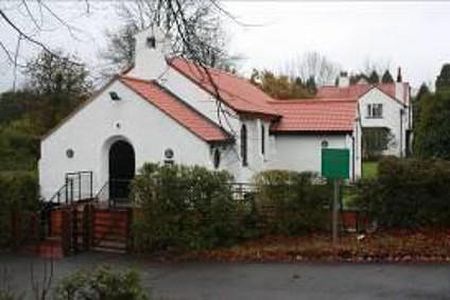 RC Church of St. Milburgh in Church Stretton, Shropshire
RC Church of St. Milburgh in Church Stretton, Shropshire
A very old church in the village of Llanfillo in the Welsh county of Powys close to the English border was formerly dedicated to St. Milburgh, but now it is dedicated to a local saint named Billo. A Roman Catholic church in the Shropshire town of Church Stretton is dedicated to St. Milburgh as well.
Holy Mother Milburgh, pray to God for us!
08 / 03 / 2015
1 It is believed that part of the early English double monastery in Wenlock where nuns lived was located on the site of today’s Holy Trinity church (built by Cluniac monks for the townspeople), while the part for monks was situated on the site of the later Cluniac Priory, now occupied by extensive ruins and area for walks. Interestingly, the original monastery here was founded on the site of the earliest Roman church built in Wenlock, which is perhaps as early as the second century.

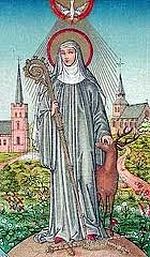
No comments:
Post a Comment